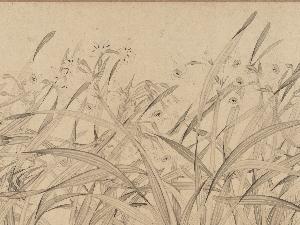Chao Meng-Chien
Chao Meng-Chien;Zhao Mengjian
Place: Haiyan
Born: 1199
Death: 1295
Biography:
Chao Meng-Chien, also known as Zhao Mengjian, was a Chinese painter and politician from Haiyan, Zhejiang. He was born in 1199 and died in 1295, making him a prominent figure during the Song dynasty.
Early Life and Career
Chao Meng-Chien was a member of the Song dynasty who attained high rank at court as a Mandarin. He became president of the Hanlin Academy, retiring when the dynasty fell. During his time, he was known for his depictions of daffodils, plum blossom, orchids, and bamboo.
Artistic Style
Chao Meng-Chien's artistic style is characterized by his use of ink wash painting, also known as Suiboku ga. This type of Chinese ink brush painting uses washes of black ink in different concentrations to create unique and expressive pieces. His paintings often featured landscapes, figures, and poetry, showcasing his delicate brushwork and subtle color schemes.
Influence and Legacy
Chao Meng-Chien's influence can be seen in many modern Japanese artists and styles, including the Bunjinga Art Movement. This style of Japanese painting emerged during the Edo period and was heavily influenced by Chinese literati painting and calligraphy. To learn more about the Bunjinga Art Movement, visit The Bunjinga Art Movement on Wikioo.org. Some of Chao Meng-Chien's notable works can be found in museums such as the Tokyo National Museum. His paintings are also available for viewing and purchase on Wikioo.org, including his depictions of daffodils and plum blossom. For more information about Chao Meng-Chien and other Chinese painters, visit Chao Meng-Chien on Wikioo.org.
- Visit Zhao Mengjian on Wikipedia to learn more about his life and career.
- Explore the Suiboku ga Art Movement on Wikioo.org to see how Chao Meng-Chien's style influenced other artists.
- Discover other Chinese painters, such as Qian Xuan, on Wikioo.org.
Chao Meng-Chien's legacy continues to inspire artists and art lovers today. His unique style and contributions to the world of Chinese painting make him an important figure in art history.


